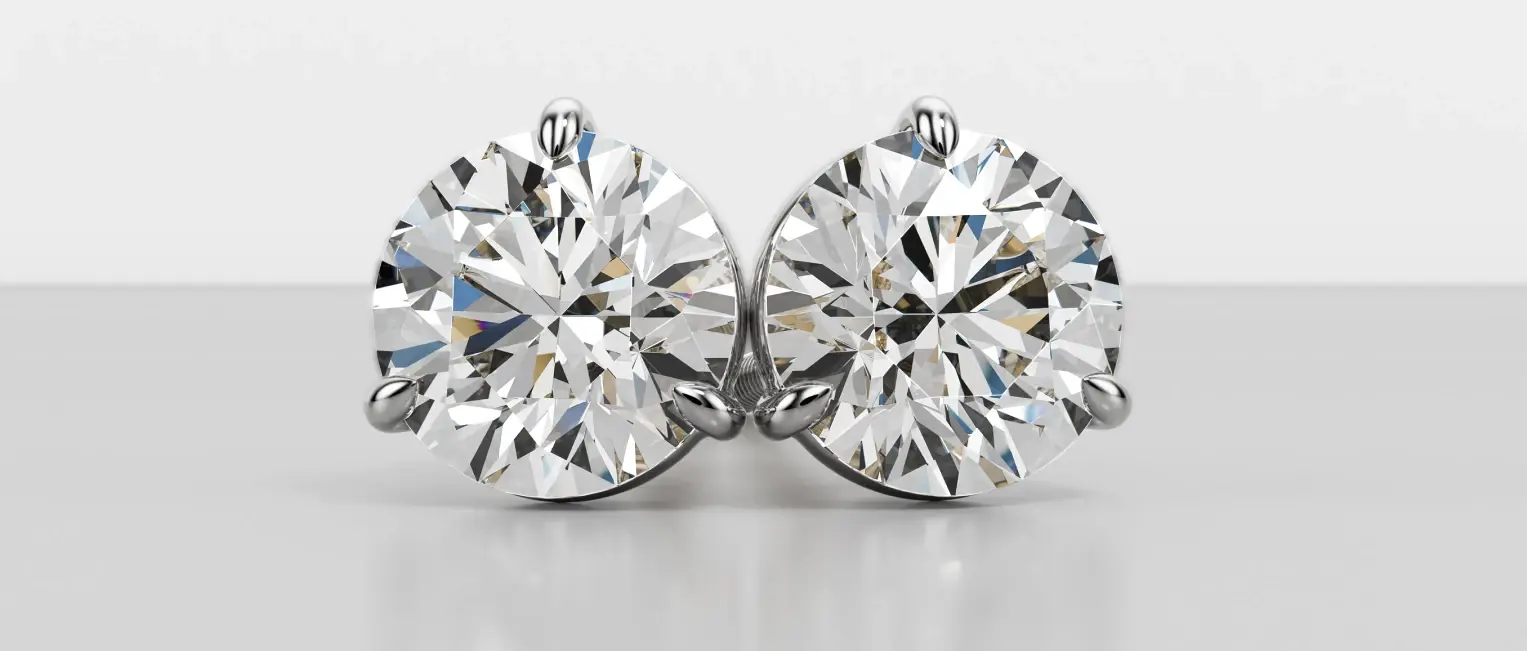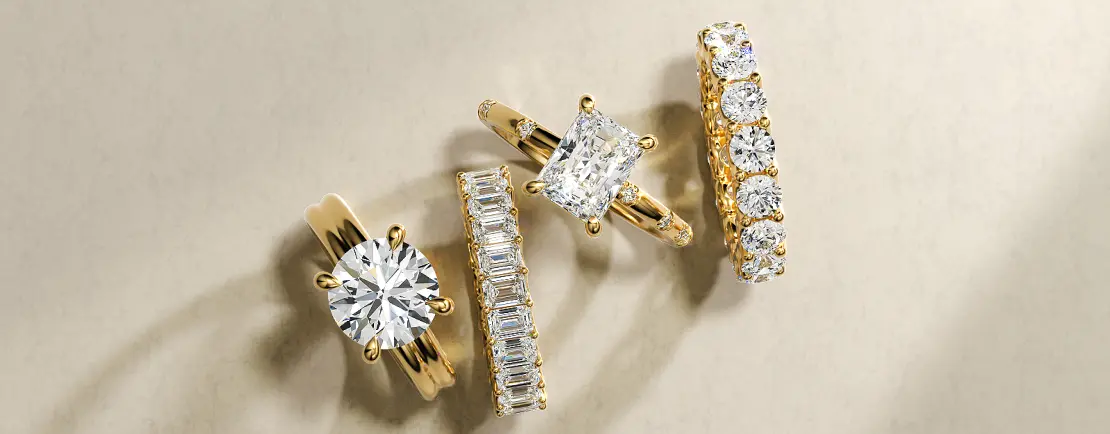How Are Lab-Grown Diamonds Made?
Diamonds are beautiful gemstones often used in engagement rings and other jewelry. There are two ways that diamonds are created: mined natural diamonds and lab-created diamonds.
Both natural and lab-grown diamonds add a dazzling sparkle to your jewelry collection. If you’re unsure about purchasing lab-created diamonds, read further to learn more about the gems and the process used to create them.
Are Lab-Created Diamonds Real Diamonds?
You may have heard lab-created diamonds called cultured diamonds or man-made diamonds and wondered if they were actual diamonds or costume jewelry material. Lab-created diamonds are different from diamond simulants because they are made of carbon, like natural diamonds. They share the atomic makeup of naturally mined diamonds.
Lab-created diamonds are made using cutting-edge technology that precisely replicates the process of creating a diamond from carbon. So, lab-grown diamonds are the same in chemical and physical makeup as natural diamonds and they look like natural diamonds.

The Federal Trade Commission (FTC) has established the definition of a diamond as pure carbon in crystallized form—regardless of how that crystal is formed. Both mined and lab-grown diamonds meet this definition. Lab-created diamonds have the same characteristics as natural mined diamonds. Therefore, a lab-grown diamond is a real diamond.
How Are Lab-Created Diamonds Made?
Before discussing lab-created diamonds, it’s essential to understand that natural diamonds are created in nature by extreme heat and pressure. Those conditions are simulated to create beautiful, pure diamonds in the lab. Forming diamonds beneath the Earth’s surface takes millions of years, but it only takes days or weeks to create a diamond in the lab.
Scientists use two methods to create diamonds in the lab: high pressure–high temperature (HPHT) or chemical vapor deposition (CVD). CVD is the preferred process for producing higher-quality stones.

The high pressure–high temperature (HPHT) method was the original method of creating diamonds in the lab. This method has been used since the 1950s. It works by recreating the pressure and temperature conditions associated with the natural formation of diamonds.
To use the HPHT method, scientists start with a tiny diamond they call a seed. The seed is placed in carbon and then exposed to extreme pressure and high temperatures. The temperatures for this process reach over 2,000 degrees Fahrenheit. As for pressure, scientists use approximately 1.5 million pounds per square inch (PSI).
The carbon melts around the diamond seed. As this happens, the diamond begins to form. The carbon is then cooled, and the result is a new diamond. Diamonds formed using the HPHT method have a tendency to have a yellow hue to them. The tint is attributed to the exposure to nitrogen during creation. They also have darker metallic inclusions, which readily identify them as lab-grown diamonds because there is rarely metal captured in naturally formed diamonds.
Naturally formed diamonds aren’t magnetic. The metal that gets captured in the HPHT diamonds causes them to be magnetic. This is another way to identify the diamonds as lab-created gems.
In the 1980s, scientists developed a new method to form diamonds in the lab setting. The chemical vapor deposition (CVD) method uses less pressure to make the diamonds, and the machine used for the process is smaller. This method mimics how diamonds are formed in gas clouds.

Like HPHT, the CVD method begins with a diamond seed. The scientist places the diamond seed in a vacuum chamber that is filled with carbon-rich gases. The chamber is then heated to almost 1500 degrees Fahrenheit. At these temperatures, the gas becomes plasma, releasing carbon pieces that layer upon the diamond seed, forming a new diamond.
The CVD method forms diamonds that are the most chemically pure type of diamonds available. The type is extremely rare for natural diamonds, which helps to identify these as lab-grown diamonds. The diamonds created with the CVD method don’t have nitrogen or boron impurities, and they aren’t magnetic.
Both methods of creating diamonds are effective and create a diamond with the same characteristics as a naturally formed diamond. It’s difficult to tell a lab-created diamond from a natural one with the naked eye. Once the diamonds are created, they are cut and placed in the jewelry setting.
How Are Diamonds Graded?
Just like naturally formed diamonds, lab-grown diamonds are graded based on cut, clarity, color, and carat. There are multiple labs that are used for grading diamonds, but all labs have basically the same process for grading. Some gemology labs will have their own system for grading, but typically, the 4-Cs are the standard.
Several gemologists within the lab will grade the diamond individually. Then the grades are combined, and the final grade is determined from the compilation of independent grades. The labs use this process in an attempt to give unbiased grades to each gem. If a diamond gets sent back for regrading, it might receive a different grade the second time even if it’s returned to the same lab.

The potential for different grades explains the subjective nature of the declaration of which lab is best for grading. Retailers will use labs that they trust to give a fair assessment of the gems. If you are concerned with the grading process or the certification of the gem you are purchasing, discuss which lab your retailer uses and why they choose to use that lab.
Final Thoughts
Lab-created diamonds are real diamonds, just as naturally formed diamonds are. They have the same properties and are graded in the same manner. There are two manners of creating diamonds in a lab: the HPHT method and the CVD method. Both ways make beautiful gemstones that are appropriate for use in your favorite jewelry setting.
The HPHT method of creating diamonds sometimes leaves a yellow hue on the diamond. This method also leads to magnetic stones on occasion. The CVD method produces very pure diamonds.


























